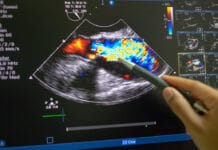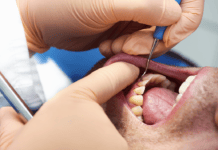It can be a challenge to treat kids with autism in the dental office. They are sensitive to lights, smells, sounds, and textures, and some of these patients don’t respond well to verbal advice and directives. For example, many parents of autistic children find it difficult to get their kids to brush, as the intrusion of the toothbrush and the taste of the toothpaste may be disruptive to their sensitivities.
When brushing is too intense, interdental cleaning and mouthwash use may seem impossible. We need to find an effective way to reach these children. However, the question is if there is one great program that we can all adopt, making their oral hygiene education universal?
Is Visual Pedagogy Effective in Improving Cooperation Towards Oral Hygiene and Dental Care in Children With Autism Spectrum Disorder? A Systematic Review and Meta-Analysis addresses that question while highlighting the sort of difficulties that we may face with some of our autistic patients.
Let’s discuss our options.
Dental Care for Patients on the Spectrum
We know that using visual aids can help us teach any child effective routine dental care, but how effective are they with autistic children?
Children on the spectrum do not want someone close to them in their mouths, especially when they have never experienced it before. They thrive on strict routines and repetitive action; new experiences can terrify them. They are at a much higher risk of caries and other problems because some of these affected children cannot tolerate brushing and other home care routines no matter what encouragement they receive from their parents and us.
On the whole, autistic children seem to take in more sugary drinks and food due to their particular aversions, so they may suffer from increasingly worse dental issues. The usual techniques we employ in an attempt to reach these children, such as desensitization techniques, positive/negative reinforcement, and the tell-show-do technique, aren’t as effective as we wish them to be. And a one-size-fits-all program has proven elusive, even impossible.
Many children with autism can definitely develop healthy routines when they are taught in the right way, but how can we, the dental specialists, help parents teach and support their children as they learn more positive routines?
Does Visual Pedagogy Work?
Visual pedagogy has been, thus far, the most effective teaching tool when it comes to teaching all children, but especially children on the spectrum. Visual pedagogy is defined as using images to teach and reinforce behavior, outline consequences, and teach new, easily adaptable techniques.
A documented 1,142 children with autism were given visually stimulating instructions and studied for progress in their dental hygiene routine. But researchers ran into an unforeseen problem. There were no universal standards for visual pedagogy available, especially for children with autism. What they discovered, though, was that autistic children reacted well to the visual instruction but would do even better with instruction tailored specifically for autistic children and not just children in general.
We desperately need a visual program directed especially for autistic children, addressing their particular needs. We need to be able to treat these children without giving them a bad dental experience each time, as this can easily lead to confusion, more fear, and distrust.
It is absolutely essential for our autistic patients to see the same hygienist each time and to go through the same preventative treatments in the same order to prevent furthering any feelings of anxiety. It will be easier on the child when they can see someone they know and trust each time that they go. This trust will go a long way with these particular patients, some of who may communicate non-verbally, which requires us to learn how to communicate with them.











